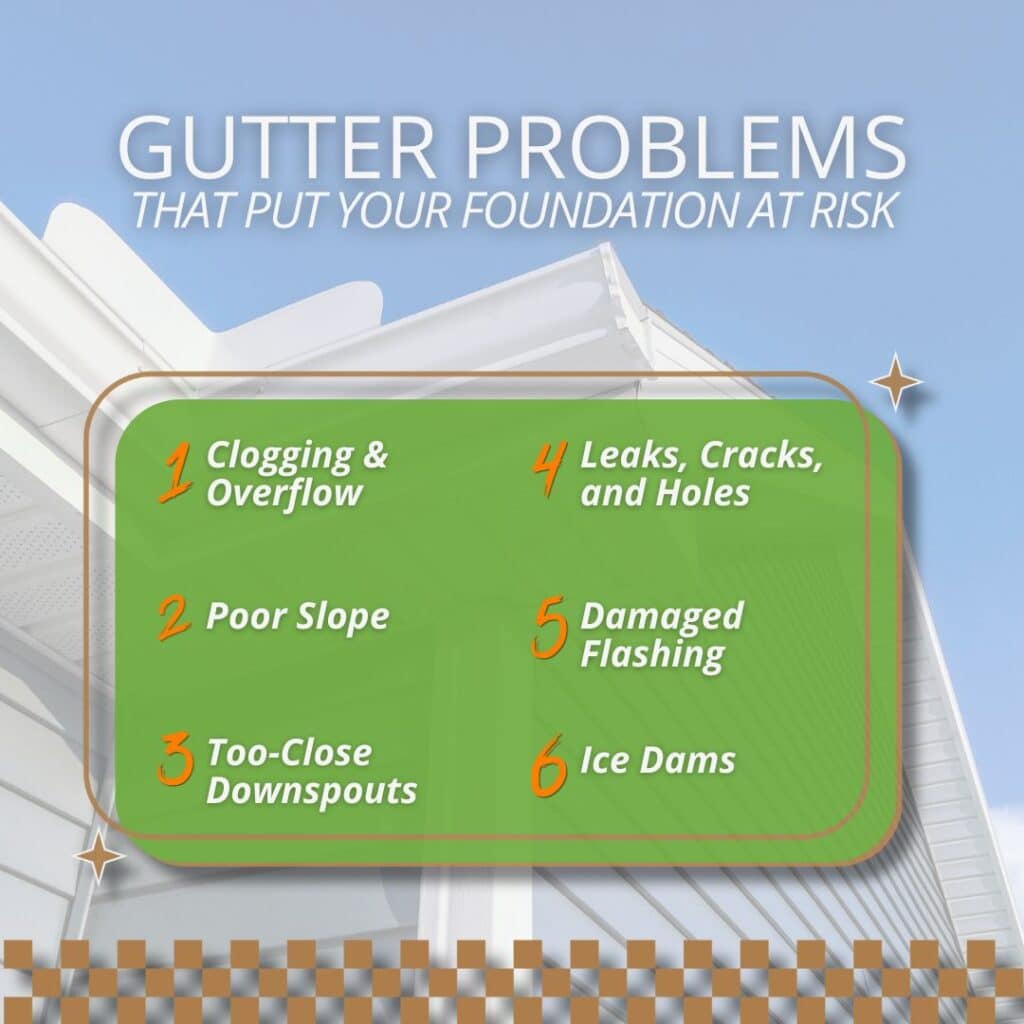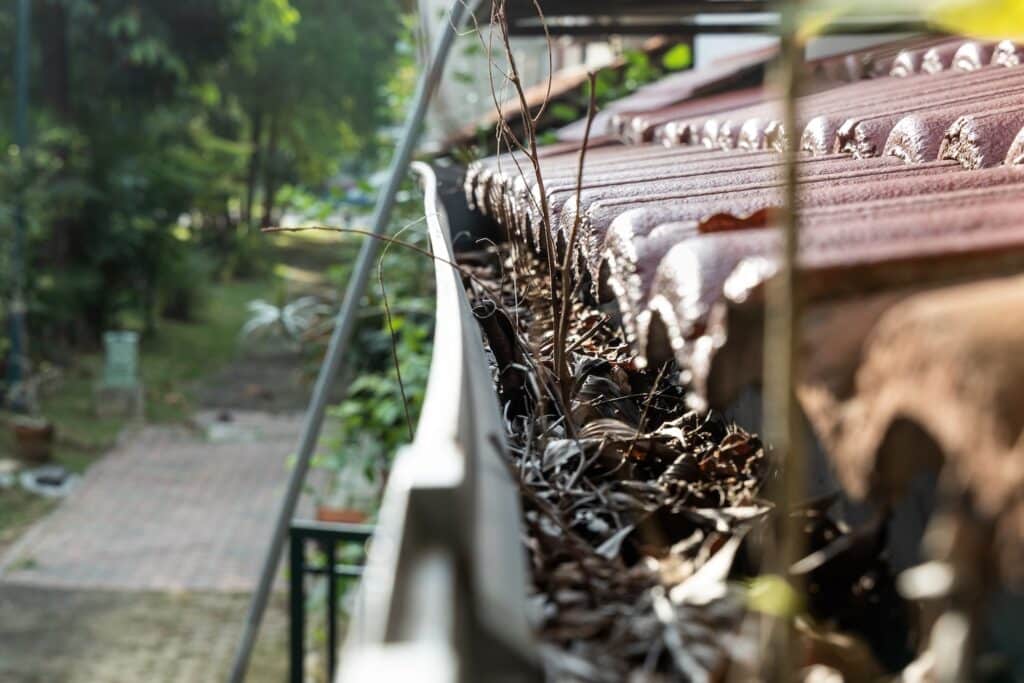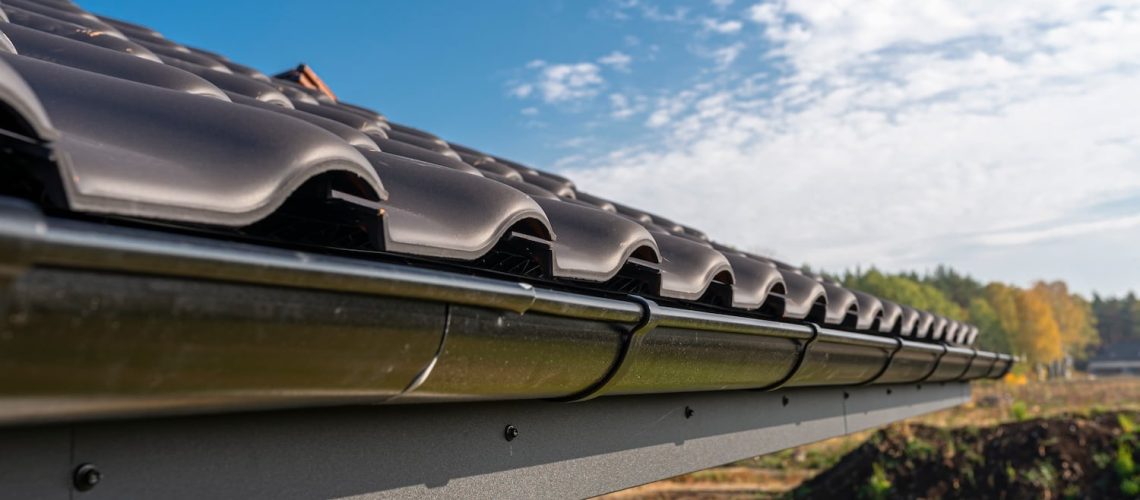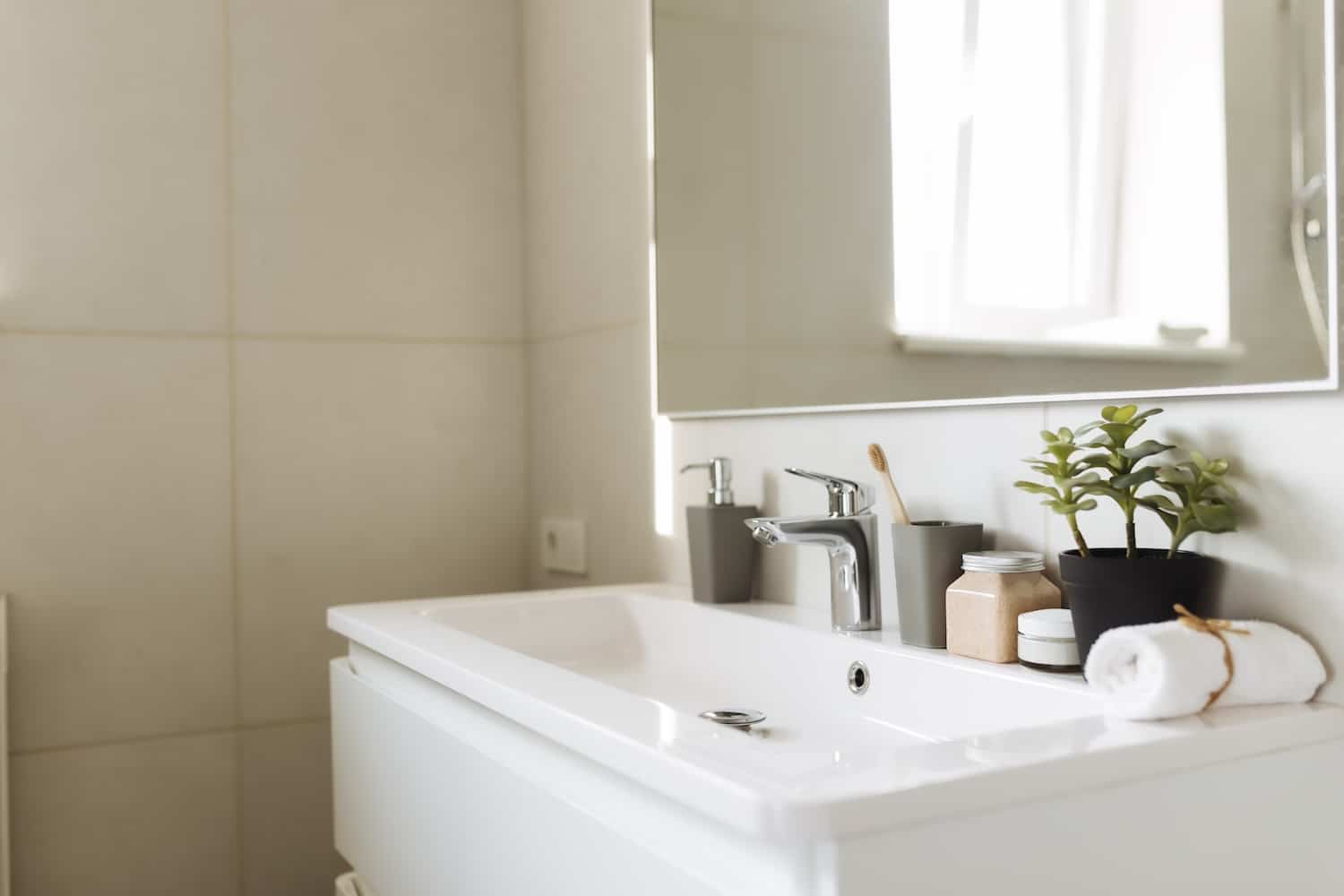Your rain gutter system is meant to guide your home’s drainage process, but when something goes wrong, that water ends up where it shouldn’t—soaking into your foundation, siding, or pooling outside. Small gutter issues can seem like no big deal, but they often lead to bigger, pricier problems.
Leaks, clogs, and poor drainage don’t just affect the gutters themselves. Water overflow can erode soil, weaken structures, and even cause basement flooding. Spotting gutter defects early helps prevent damage, so this guide covers common problems that can put drainage at risk and what to do about them.
How Gutter Problems Create Bigger Ones
When gutters fail, rainwater doesn’t disappear—it finds another way down, and that’s where the trouble starts.
Instead of flowing safely through the system, water spills over the edges, backs up onto the roof, or collects near the foundation. Water pooling around the foundation can seep into basements, weaken structural supports, and cause cracks over time.
Overflowing gutters soak siding and window frames, leading to wood rot, mold, and interior leaks. If gutters are sagging or clogged, water may even back up under shingles, damaging the roof and creating the perfect conditions for costly repairs.
Gutter problems don’t stay small for long, and the longer they go unchecked, the more damage they can cause. Let’s go over some of the most common and troublesome ones.

1. Clogging and Spilling
Home drainage is designed to channel rainwater away, but when the gutter fills with leaves, dirt, and debris, that rain has nowhere to go. Instead, it spills over the sides, soaking the siding, doors, and windows.
The water that pools near the foundation can seep into basements, weaken concrete, and lead to cracks over time. Clogs also make gutters heavier, increasing the risk of sagging or detachment.
If water backs up too far, it can even reach the roofline, leading to leaks and rot in fascia boards or roof decking.
2. Sagging or Pulling
A properly installed gutter system stays flush against the roofline, allowing water to flow smoothly toward downspouts.
But when gutters sag or pull away, they create low spots where water collects instead of draining. This standing water adds weight, pulling the gutters even further from the house.
Over time, sections may break off completely, leaving parts of the home unprotected. Sagging gutters also leave gaps between the fascia and the gutter, creating entry points for pests and moisture damage.
3. Poor Slope
Gutters need a slight downward angle to keep water moving toward downspouts. If they’re installed without the right pitch—or if sections shift over time—water can pool inside instead of draining out.
Pooling water inside gutters speeds up rust and corrosion in metal systems and can even lead to algae or mold growth.
When water isn’t directed properly, it may also spill over the edges or drain too close to the house, leading to foundation damage.
4. Downspout Proximity
A working drainage system doesn’t just move water off the roof—it carries it far enough away to prevent pooling near the foundation.
If downspouts stop short, staying too close to the side of your home, rainwater collects at the base of the exterior. That leads to erosion, leaks, and structural issues.
In heavy storms, water draining too close to the house can saturate the soil, making it unstable. This can cause foundation settling, cracks, and even interior moisture problems like mold or musty odors.
5. Leaks, Cracks, and Holes
Gutters are constantly exposed to the elements. Over time, small cracks or holes can form, letting water escape before it reaches the downspouts.
Even minor leaks can cause gradual damage, as water trickles onto siding, fascia boards, or the ground below. In colder months, leaks become even more of a problem.
Water trapped in small cracks can freeze and expand, making the damage worse. Over time, unchecked leaks can lead to rotting wood, rusted metal, or weakened gutter joints.
6. Missing or Damaged Flashing
Flashing is a thin metal barrier that helps direct water from the roof into the gutters.
When it’s missing or damaged, rainwater can slip behind the gutter system instead of flowing through it. This can lead to hidden moisture damage in fascia boards, soffits, or even interior walls.
Since flashing issues aren’t always visible from the ground, they can go unnoticed until significant damage has already occurred.
7. Ice Dams That Block Drainage
In winter, melting snow from the roof can refreeze at the gutter’s edge, creating an ice dam.
When this happens, water gets trapped behind the ice, seeping under shingles and into the roof structure. The weight of ice buildup can also strain gutters, causing them to bend or detach.
Homes with poor attic insulation or ventilation are more likely to experience ice dams, as uneven roof temperatures contribute to melting and refreezing cycles.
Simple Ways to Keep Gutters Working Right
Gutters work best when they stay clear, secure, and positioned to drain water safely away from the home. A few small habits can go a long way in preventing drainage problems.
- Remove leaves and debris before they cause clogs
- Trim trees to reduce the amount of falling twigs and leaves
- Check for leaks, cracks, or sagging after storms
- Ensure downspouts extend far enough to direct water away from the foundation
- Look for signs of water damage on siding, fascia, or basement walls

When to Call a Professional
Some gutter problems are easy to spot, but others can go unnoticed until they start causing real damage or rain drainage stops.
If you see signs of poor drainage, a home inspection can help uncover hidden issues before they lead to costly repairs.
- Frequent clogging or overflowing even after cleaning could mean underlying installation or grading issues
- Sagging, detached, or leaking gutters may indicate damage that affects your home’s structure
- Water pooling near the foundation or basement leaks could be a sign of improper drainage or grading problems
- Roof leaks, mold, or interior water stains might be caused by hidden gutter or flashing failures
A professional home inspection can assess the full drainage system, including gutters, downspouts, grading, and exterior structures, ensuring your home is protected from long-term water damage.
Conclusion
Rain drainage through your gutter system plays a bigger role in home protection than most people realize. When they don’t drain properly, water doesn’t just disappear—it finds new paths that can lead to foundation damage, roof leaks, and costly repairs.
Catching gutter issues early helps prevent bigger problems down the road. Regular maintenance goes a long way, but a professional inspection can provide a clearer picture.
If you’re dealing with drainage concerns or want a professional assessment of your home, Inspection Gator is here to help.





